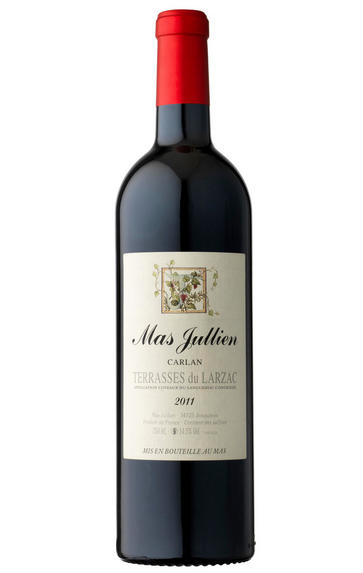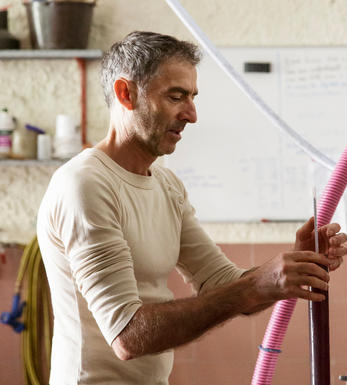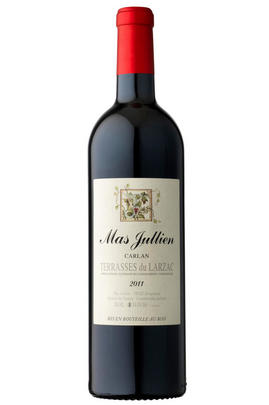
About this WINE

Mas Jullien
Mas Jullien's 15 hectares were developed by Olivier Jullien in 1985. It is located in an area of magnificent wine potential, that of the Terrasses du Larzac (Côteaux du Languedoc), in Jonquières amidst the rocky terraces of the plateau (if that doesn’t sound too contradictory), itself situated 40 km to the north of Montpellier.
The terroir is divided between the argilo and the calcaire (clay and the limestone); the wines themselves come from Syrah, Mourvèdre and Carignan, vinified by parcel and aged for around 18 months in demi–muid, delivering plenty of garrigue-influenced charm and a pleasing purity.

Grenache/Garnacha
Grenache (Noir) is widely grown and comes in a variety of styles. Believed to originate in Spain, it was, in the late 20th century, the most widely planted black grape variety in the world. Today it hovers around seventh in the pecking order. It tends to produce very fruity, rich wines that can range quite widely in their level of tannin.
In many regions – most famously the Southern Rhône, where it complements Syrah and Mourvèdre, among other grapes – it adds backbone and colour to blends, but some of the most notable Châteauneuf du Pape producers (such as Château Rayas) make 100 percent Grenache wines. The grape is a component in many wines of the Languedoc (where you’ll also find its lighter-coloured forms, Grenache Gris and Blanc) and is responsible for much southern French rosé – taking the lead in most Provence styles.
Found all over Spain as Garnacha Tinta (spelt Garnaxa in Catalonia), the grape variety is increasingly detailed on wine labels there. Along with Tempranillo, it forms the majority of the blend for Rioja’s reds and has been adopted widely in Navarra, where it produces lighter styles of red and rosado (rosé). It can also be found operating under a pseudonym, Cannonau, in Sardinia.
Beyond Europe, Grenache is widely planted in California and Australia, largely thanks to its ability to operate in high temperatures and without much water. Particularly in the Barossa Valley, there are some extraordinary dry-farmed bush vines, some of which are centuries old and produce wines of startling intensity.



Buying options
Add to wishlist
Description
The Carlan cuvée is an old-vine blend of Grenache (60%), Carignan (30%) and 10% shared between Syrah and Cinsault. Schist soils underwrite the sinewy linear texture, aided and abetted by 12 months elevage in fine –grained oak foudre. A forest floor nose with the whiff of a distant bonfires leads onto a palate of dark berried fruit with hints of chocolate, cassis and violet with tapenade and hedgerow underneath.
Simon Field MW, Wine Buyer
wine at a glance
Delivery and quality guarantee